What Makes a Home Jewish?
Jewish Atlantans show off their homes and discuss what gives a home a Jewish feel.
You know that feeling when you walk into a Jewish home either before Shabbat or a Jewish holiday? You kiss the mezuzah – before the era of coronavirus – and the warm smells of challah and chicken soup, kugel and rugelach permeate the air. You listen to the Hebrew prayers and sit with the family around a dining room table surrounded by cabinets of Judaica. The sense of Judaism within those walls is palpable.
In light of the global health crisis, Jews are spending more time in their homes, which have literally become sanctuaries or safe havens from the outside world.
The AJT asked a few rabbis, a community activist, an interior designer and an education director, all with distinct decorating skills, to share what makes a home Jewish. They listed among the qualities of a Jewish home a strong sense of Jewish values, a place for socializing and relationship-building, meaningful Judaica evoking memories of departed loved ones or family history, Jewish books and ritual experiences.
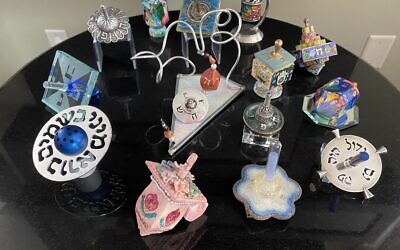
For interior designer Linda Rickles, “creating a warm and inviting atmosphere for family and friends is the most enduring and effective way to create a Jewish home.
Meals, sustenance and sociability create conversation and dialogue between family members and friends. An example of a physical object that encourages camaraderie is a round dining or breakfast table.”
Shabbat candles, mezuzot, ketubot and Jewish art “are all powerful symbols and important reminders of our Jewish faith, heritage and history,” the Sandy Springs resident continued.
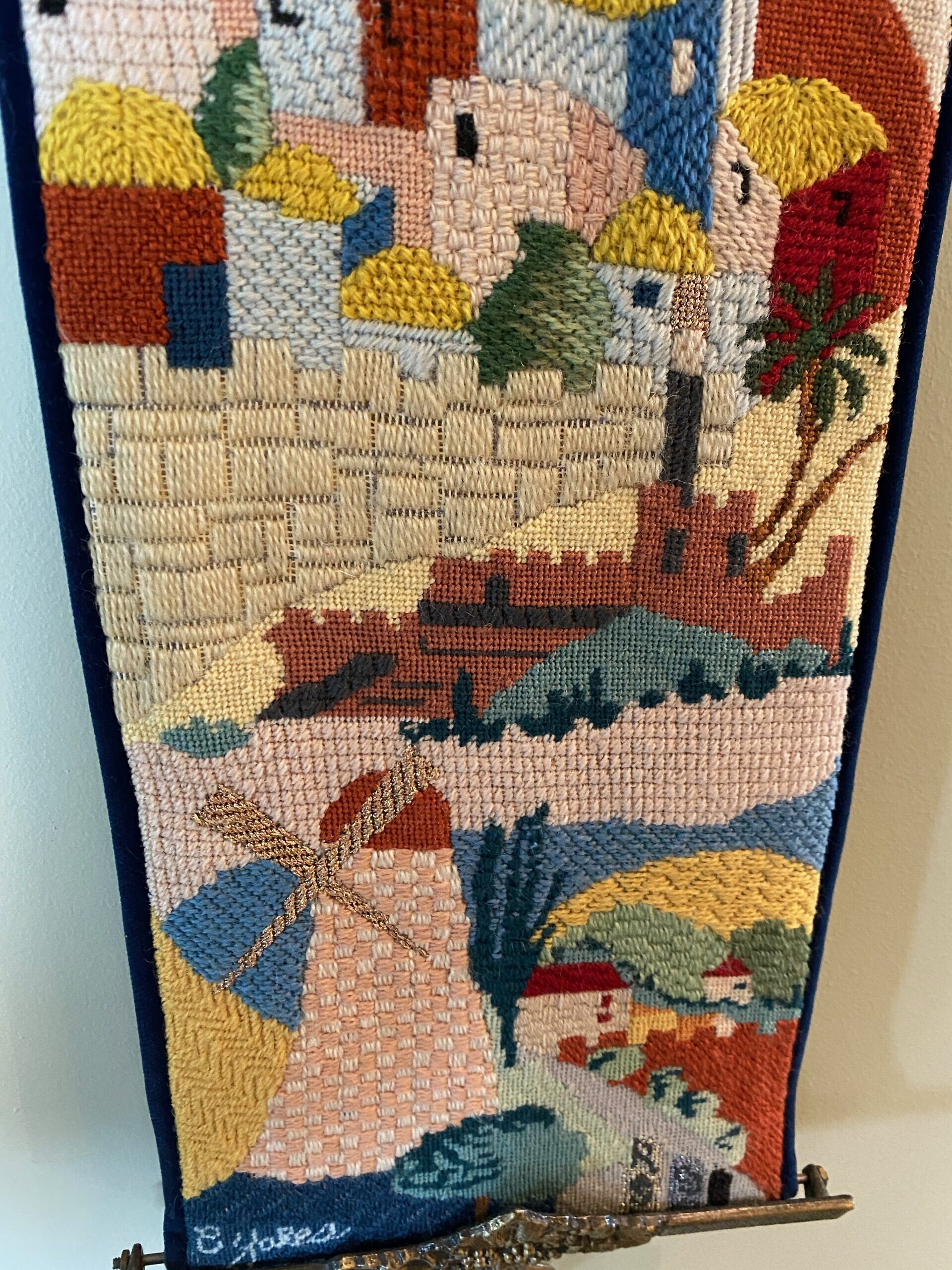
When she designs a space for clients, she tries to incorporate their Judaica to create a visual effect that is warm and inviting. That may include seder plates, Shabbat candles or a library of Jewish books.
One of Rickles’ favorite pieces in her own house is an oil painting of the biblical Ruth and mother-in-law Naomi she inherited from her grandmother. “I love the painting and the sentiment it evokes. But what made my grandmother’s home so special was not the mezuzah on the door or the Sabbath candles on the table, but the warm, inviting atmosphere she created for anyone who came to visit. …
“She always invited students or anyone else that needed a place to celebrate a holiday to her home. Her reputation as a renowned interior designer, not to mention a marvelous cook, helped add to her mystique. … Once someone entered her door, they were no longer a stranger.”
Jewish Values
Community activist Carol Nemo said the main priority of a Jewish home should be Jewish values, “number one, then tzedakah and tikkun olam, charity, justice and repairing the world.”
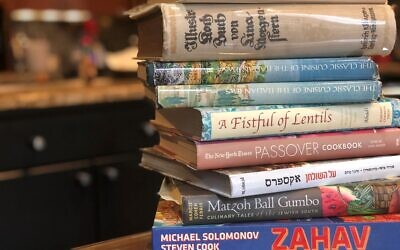
The key to Jewish values, she said, is keeping the traditions and celebrating the meaningful rituals associated with Shabbat and holidays.
Nemo, the daughter of philanthropist William Breman, shows by example.
She said she learned to make challah after recuperating from rehab at The William Breman Jewish Home about six years ago. She was invited to help make challah as a volunteer and has continued to do it every Friday at the nursing home and often at her own house for Shabbat.
She recalled how her parents invited for Passover Georgia Tech students and soldiers from Fort McPherson. “I learned from them. We always had a seder with four other families. As the families grew, there were more and more people to celebrate. Everyone looked forward to it. … The kids grew up and they remembered that. That was part of their Jewish journey.”
The family also invited guests each year to celebrate in their sukkah in Sandy Springs.
When her children were growing up, there was a shelf in their pantry marked for tzedakah. They helped their mother pick out food from the grocery store to put on the shelf and when it was full, they brought the collection to the Temple Night Shelter for Homeless Couples, now the Zaban Paradies Center for Homeless Couples. “All these Jewish experiences were meaningful to them and us.”
One of Nemo’s hobbies is collecting dreidels and Chanukiot. People often gave her such items for special occasions. “After 10 years, I had a beautiful Judaica collection,” said Nemo, who now lives in a Buckhead condo.
“I used to open my home to Temple Sinai every year for the seventh grade class to show them our collection. They particularly loved the dreidels and asked a lot of questions, and I think they really enjoyed that.
A Family of One
You don’t have to have a family to have a Jewish home, said Rabbi Josh Lesser of Congregation Bet Haverim. He understands it might sound sappy but, “It’s a Jewish heart that makes a Jewish home. All you need is one. There’s so much emphasis on the tradition about having a partner, spouse, children, often people can feel very lonely when there’s only one of you.”
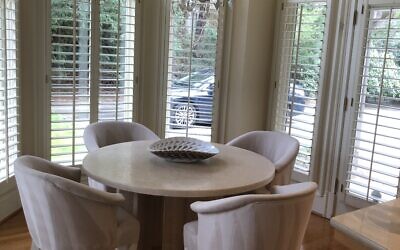
Regardless of family size, the home serves as a sanctuary, maybe now more than ever, he said. From the moment you enter a Jewish home, the mezuzah is a “powerful reminder to leave anxiety out the door and be safe in the home,” he said.
“Literally we are in a time now that the home is our sanctuary. Businesses have closed, restaurants. More people are looking to the home and I think that’s a place of Jewish values and good Jewish decisionmaking.
He cited the “Ma Tovu” as a collection of psalms about the Jewish home. “How goodly are your tents, O Jacob, your dwellings, O Israel!” Lesser explained, “When our ancestors lived in tents, Abraham and Sarah had a place of hospitality where people were welcome.”
For Lesser, his townhouse in Inman Park is the sanctuary he needs to gain rest and renewal, allowing him to serve the Jewish people more effectively, he said.
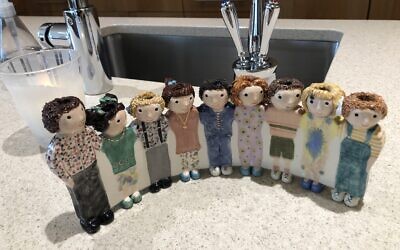
He wants to “make meaningful moments in the home, connect with ancestors and their different sacred moments throughout their time in their homes.”
Some of those moments, for him, involve preparing Jewish food. “Last night I made zucchini latkes. That’s my comfort food. The week before I made hamantashen, … I won the blind taste test contest” at the Reconstructionist synagogue in Toco Hills. “Everyone thought it was rigged.”
It was the last community gathering before the coronavirus confined congregants to their homes. “It was a way to share hamantashen from my home with the community.”
Lesser described his home as very minimalistic compared to the home he grew up in and his office. Like his parents’ home, his office is packed with tchotchkes, ritual objects, toys, books and framed pictures. Meanwhile, his home is simplistic.
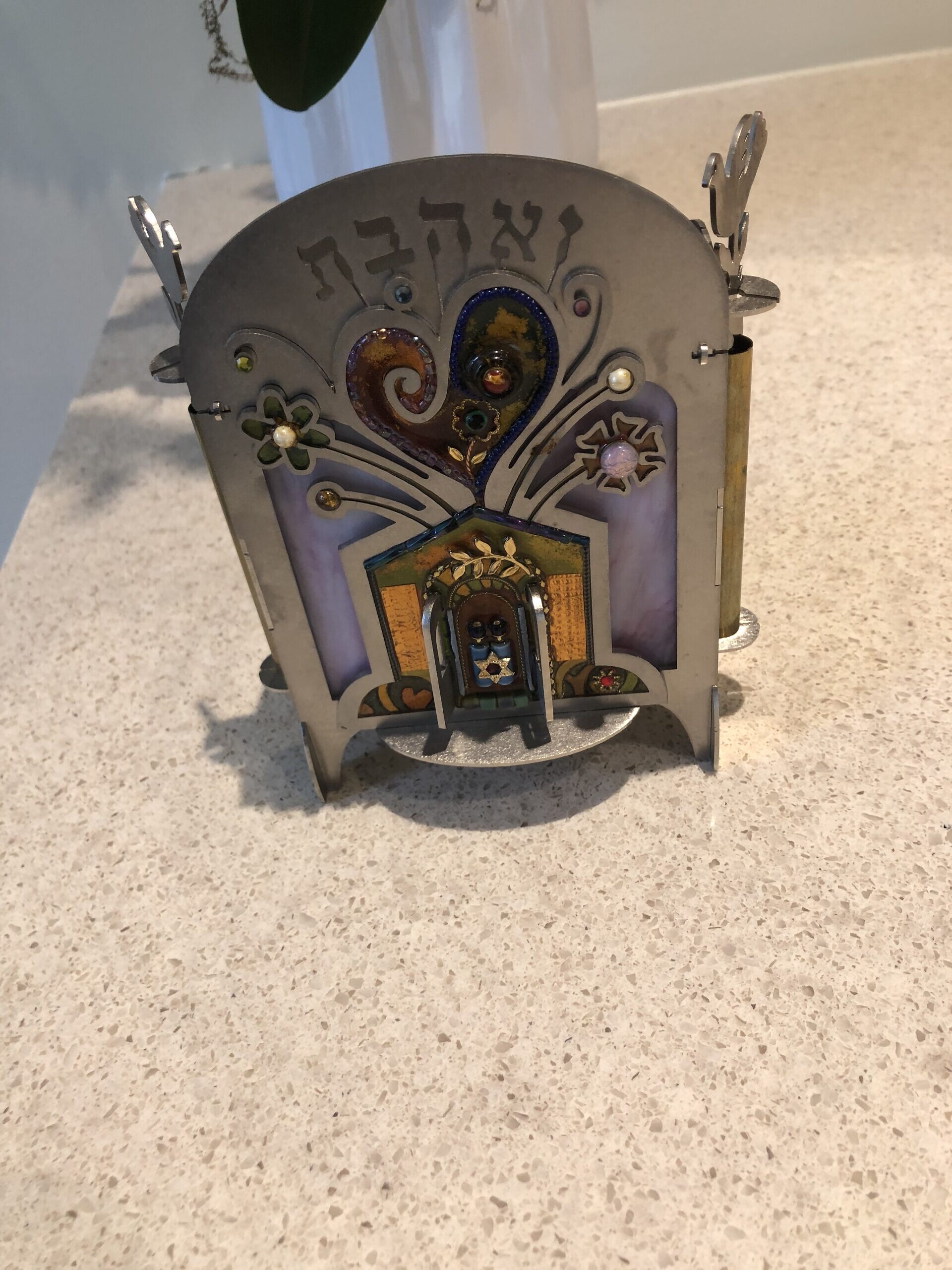
“It’s an expression of my Jewish spirituality even if it’s not a common choice.”
Probably the most notable item of Judaica in the home is the large ketubah he designed with his husband. “What makes a Jewish home for us is the ketubah. It’s the most emblematic thing, the largest piece of Jewishness. It’s in English, Hebrew and Portuguese and we designed it together.”
If the mezuzah protects occupants from what’s outside the home, Lesser said the ketubah offers protection inside. “It reminds us how to treat each other so there’s shalom bayit, peace in the home.”
Judaism in Every Room
When Rabbi Ruth Abusch-Magder and her husband David were looking for a home, they didn’t set out looking for one owned by Jews. They just wanted a home with a dining room for Shabbat dinners, she said. But when they walked in the door of this Sandy Springs home and noticed the Jewish art and mezuzot or holes where mezuzot had been, they knew this was a house where a Jewish family had lived happily, said Abusch-Magder, rabbi-in-residence and education director of Be’chol Lashon, which advocates for Jewish diversity. Her husband David is The Epstein School’s head of school.
“Jewish families told us they knew this house and had strong, wonderful memories being here. There was music and crafts and happiness and joy and creativity there. We really connected to this house.”
Abusch-Magder said there are four elements that make a home Jewish: the people who live in it, the Jewish values they bring to it, how they beautify it, and other elements of Jewish culture contained within. “All those things make a home Jewish, how we treat each other in Jewish ways and honor our parents and care for our neighbors.”
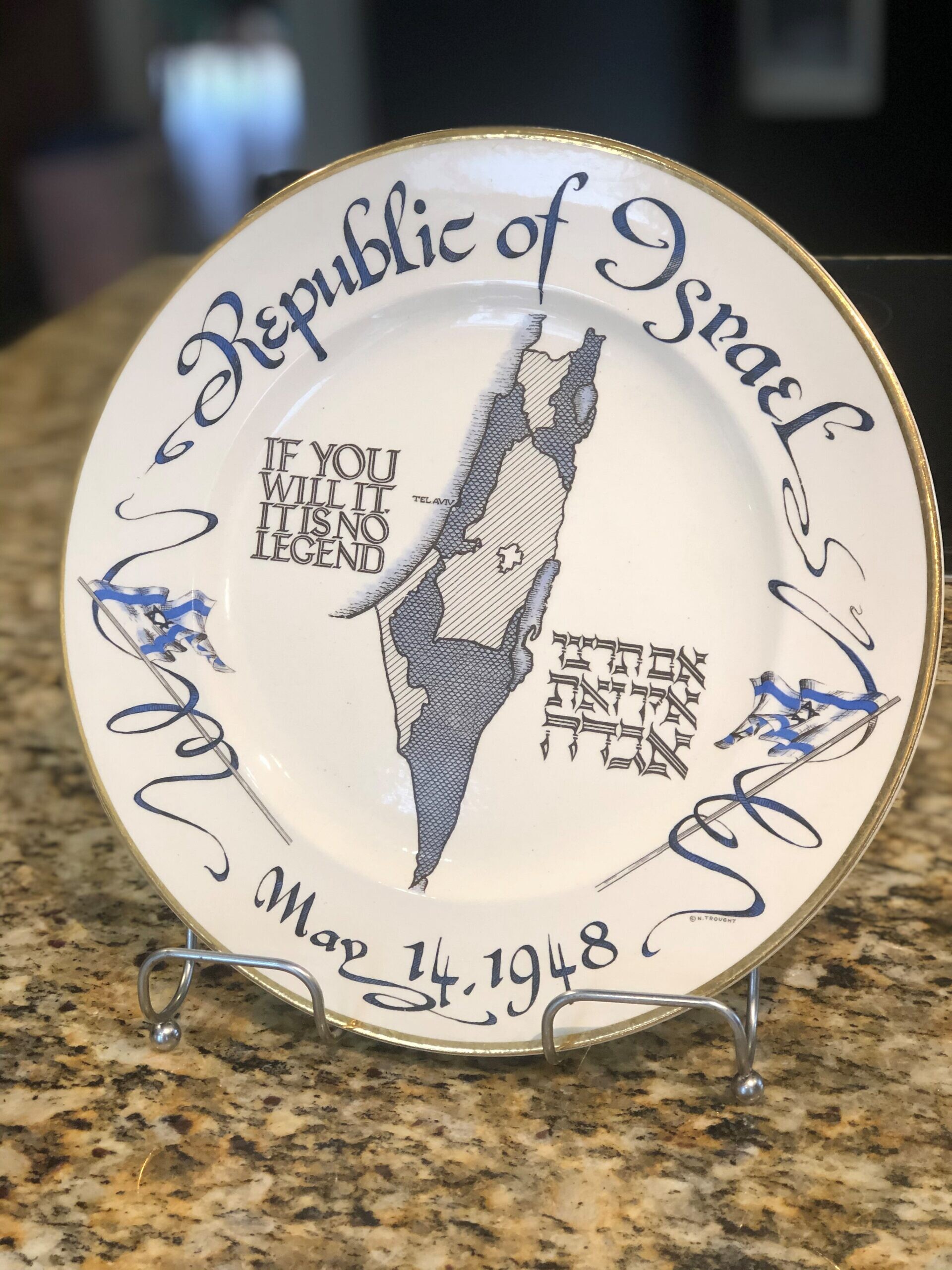
She said the home is a sacred place, a mikdash me’at, in which Jews enact Jewish rituals and traditions. Like the Torah, adorned in silver plates and woven or embroidered cloth, the concept of hiddur mitzvah encourages beautifying the home. The items chosen to include in the home tend to remind residents of “a memory or moment that connects time and space with other people and events in our lives that are part of our Jewish history.” In that way, “Judaism becomes synonymous with beautiful.”
The items do not need be expensive to be meaningful. In her home, she has silver candlesticks that are a family heirloom beside a whimsical menorah she made and painted with her nieces.
One of the few heirlooms she has from her mother’s side, most of whom died in the Holocaust, is a Pesach gefilte fish her grandmother brought from Austria. “It’s ironic because we don’t eat a lot of gefilte fish.”
For Abusch-Magder, Judaism is woven into every corner of her home. “There’s not a room in my house that doesn’t have a Jewish artifact in it. They range from books to ritual items to artwork to memorabilia. Everywhere you see Jewish in my home. It’s an expression of the many ways Judaism plays out in my life.”
Her biggest collection is of 1,000 cookbooks, mostly Jewish ones. In research for her dissertation for a doctorate at Yale University on “home-made Judaism,” Jewish home life, she learned that immigrants used cookbooks to instruct them how to perform such homemaker skills as using appliances and setting the table.
Among other unusual items in her Jewish collection is a box of sugar packets with pictures of Zionists on each one; a framed poster of the women of the Housewives League of Germany; a plate minted on the same day the state of Israel was established, May 14, 1948, with its mistaken moniker, Republic of Israel; and a framed and stained matzah cover her husband’s grandmother and great-grandmother used.
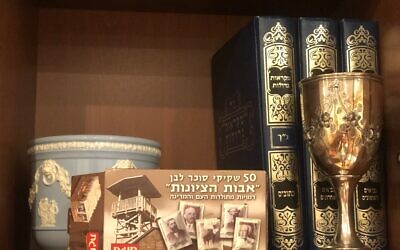
“By framing it and putting it behind glass we are paying homage to David’s family and the women and the work they did to make their home beautiful.”
Time for Books and Stories
Dena Schusterman’s ideal home has so many Jewish books “it evicts us from our own house,” said the founding director of Chabad Intown Jewish Preschool and Intown Hebrew School. She is also the wife of Rabbi Eliyahu Schusterman.
The home is the bedrock of our Judaism, Dena said, and a Jewish home should have at least one chumash, the Torah or Five Books of Moses, and commentary.
Dena is a “big proponent of unsanitized Jewish stories, stories about our ancestors, digging into stories from the Baal Shem Tov, the Talmud.” With more time at home, parents have an opportunity to teach their children about their own family identity and heritage and “how they survived Jewishly and how it impacted the family, how the family kept Judaism alive.”
Among the other ingredients for a Jewish home are observing kashrut, encouraging charity and following family purity laws, she said.
“People worry about the rest of the world, but charity begins in the home, in the kitchen” by having a tzedakah box in which to place coins each day.
“My children, before they even knew what a nickel, dime or quarter was, knew coins are tzedakah. It elevates all of your money when you give some of it to tzedakah.”
People want to do Jewishly: light Shabbat candles in the kitchen, gather with people for holidays, which means right now with our family.” She listed some of the traditional foods prepared in the kitchen, including latkes, hamantashen, “any Jewish recipe passed from grandparents infuses a home with Yiddishkeit,” the rebbetzin said.
By incorporating these aspects into Jewish home life, Judaism becomes “infused through the entire home. We actually were instructed to create a mishkan, tabernacle, in our home. What better time than now to do it?”



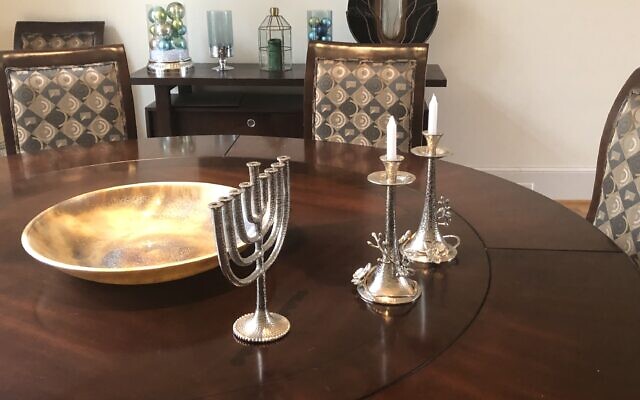
comments